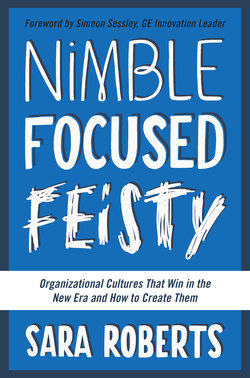Читать книгу Nimble, Focused, Feisty - Сара Робертс - Страница 13
На сайте Литреса книга снята с продажи.
Оглавление4
THEY STRUCTURE FOR SPEED
HCL TECHNOLOGIES is a US $6 billion business and information-services technology company headquartered near New Delhi, India, with operations in more than thirty countries. The company had been growing rapidly since the mid-1980s until that trajectory began to stall in 2000, even relative to HCL’s competitors. By 2005, Vineet Nayar, who had worked for HCL his entire career, was asked to take over as CEO. His only condition to the board was that he be allowed to take an unconventional approach to managing the business.
Nayar knew that the company had become bogged down by its own processes and bureaucracy, and he believed that it was heading toward an inevitable decline unless something radical was done. This conviction was reinforced shortly after he assumed his role as CEO when he visited a key customer who had canceled a long-standing HCL contract. When Nayar asked what HCL could have done better, the client said, “Your employees did nothing wrong as individuals. But your organization did not support them.”1
To Nayar, this criticism defined the crux of the problem. Customers gain most of their value from a company through their interactions with customer-facing employees, but companies are typically oriented in the other direction—on the needs, perspectives, priorities, and directives of the hierarchy. Nayar’s key insight was to reimagine the interface between customers and customer-facing employees as actually composing the “value zone” of an enterprise. He then set out to reorganize HCL Technologies to maximize that value.
His initiative was called Employees First, Customers Second (EFCS). The cliché of business is that the customer comes first. But to Nayar, if customer-facing employees were not supported in the right way, those customers would never receive “first-class” service. So the organization actually needs to operate in service of those employees in the value zone who, in turn, work to serve the customer. Every role other than those in the value zone, including the CEO, should serve as “enabling functions.” In other words, the hierarchy needs to work to support value-zone employees, not the other way around.
Nayar’s philosophy changed the way HCL Technologies operated. Instead of supervising, assessing, sanctioning, and rewarding employees, managers had a new role—encouraging and empowering employees to create value with customers. HCL Technologies set up a number of practices to drive this transformation. It implemented a Smart Service Desk—a ticket-based online system that allowed employees to submit a ticket to enable functions to solve their problems and help support their role. They created a voluntary 360-degree feedback system so that managers could be assessed by employees and that feedback was posted on the HCL intranet. Indeed, Nayar got the ball rolling by posting his own 360-degree process online. HCL also started opinion polls to keep employees engaged while surfacing their feedback and ideas. It launched “Directions” as an annual company-wide event to take strategic discussions out of closed-door meetings and share them with all employees while allowing them to ask questions about vision, strategy, and daily practices. Recognizing the importance of that, Nayar spent seven hours a week replying to employee queries.
What happened as a result? Nayar’s new approach helped make HCL Technologies more “nimble, focused, and feisty.” Thousands of employees were empowered to make daily improvements to processes that created more value for customers. HCL Technologies became better at responding quickly and effectively to customer needs, and its market share began to grow. During the eight years of Nayar’s tenure, HCL expanded operations to thirty-two countries and increased its revenues by six times.2
THE IMPACT OF HIERARCHY ON TRUST, DECISIONS, AND SPEED
Why are so many organizations hierarchical by design and nature? Is the basic pyramid structure of most org charts an effective way of directing employees, allocating resources, and pursuing strategic objectives or an elegant means of imposing power and control while stifling individual initiative?
I’m sure the motives behind hierarchical structures are complex and diverse, but I don’t think they were or are all bad.
Research out of Stanford by Larissa Tiedens and Emily Zitek on the value of hierarchical relationships supports this view. According to the research paper “The Fluency of Social Hierarchy: The Ease With Which Hierarchical Relationships Are Seen, Remembered, Learned, and Liked,” people appreciate hierarchy because it makes tasks, relationships, and thinking easier, whereas a truly flat or egalitarian model can be stressful, difficult, or unproductive for an individual to navigate or manage. As Tiedens puts it, “there are things that are good about hierarchy, and things that are good about equality. When you’re creating an organization it’s important to think about what structure will serve your goals best.”3
